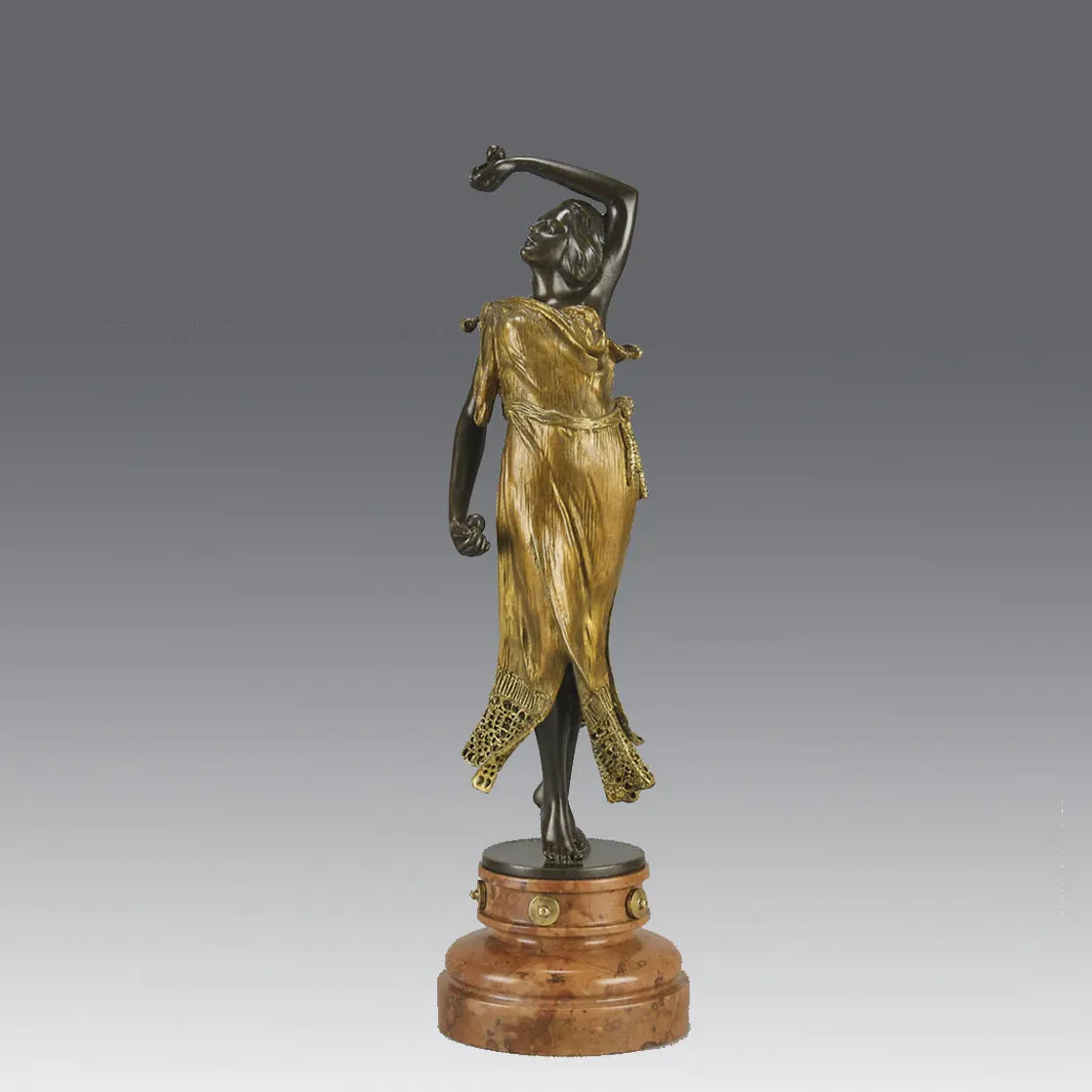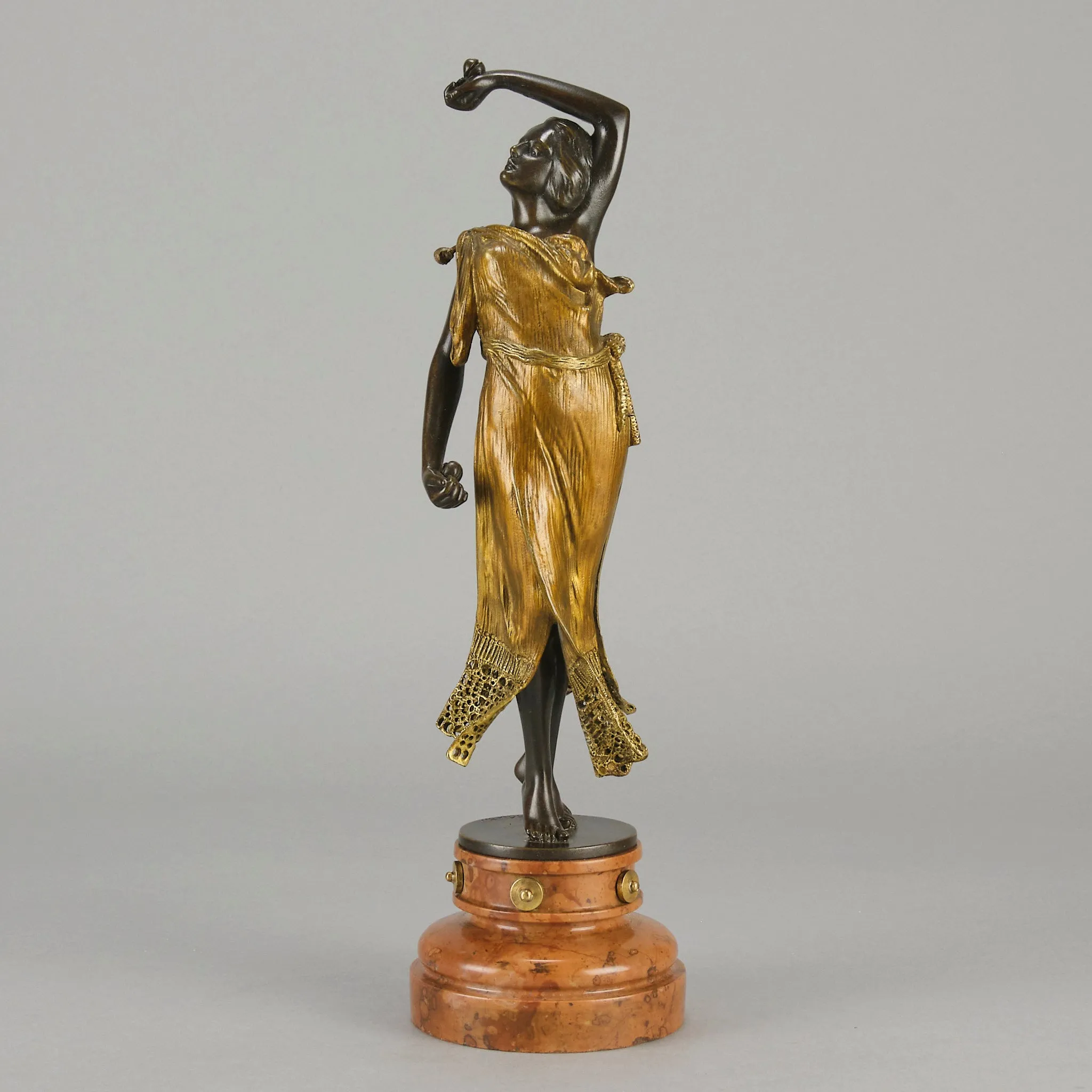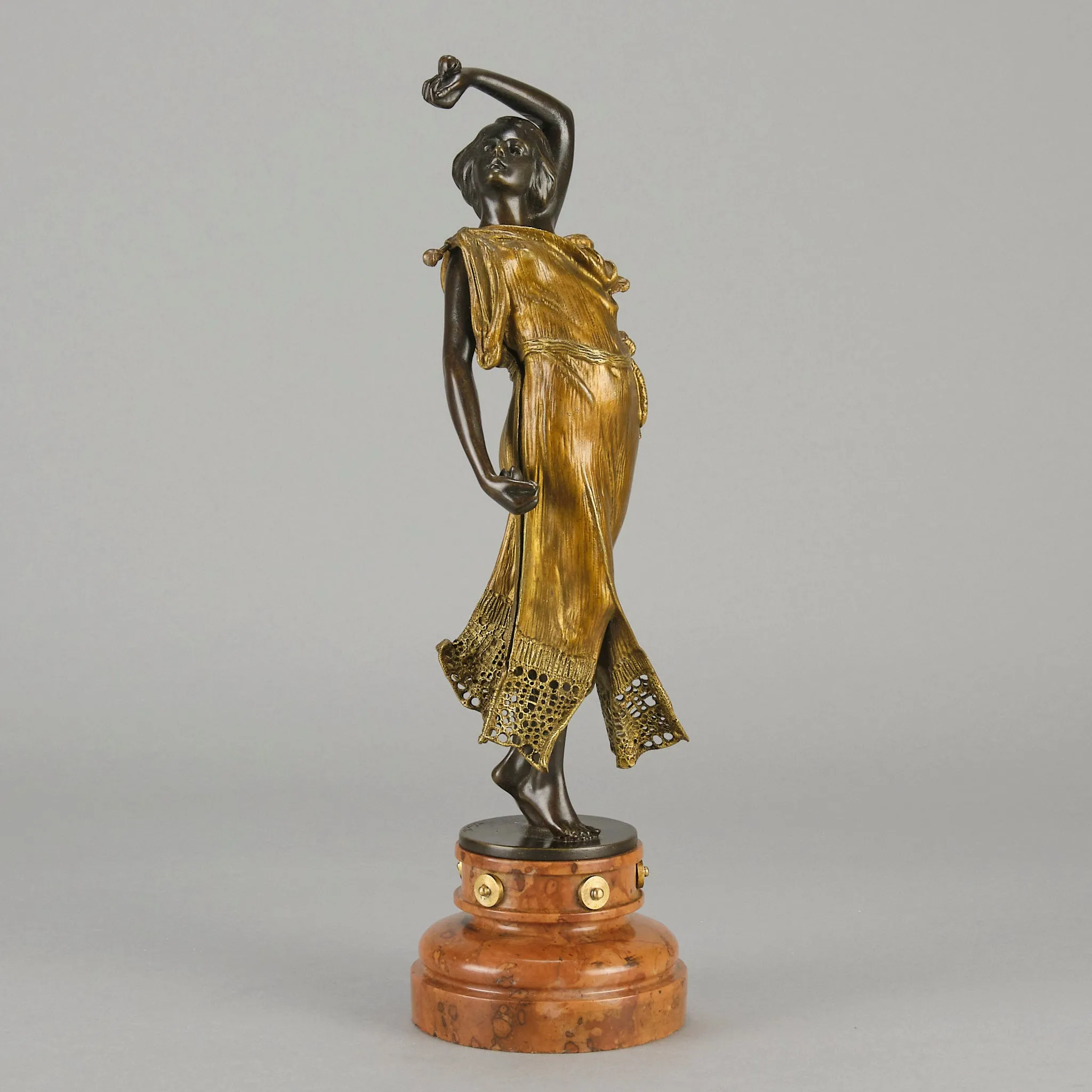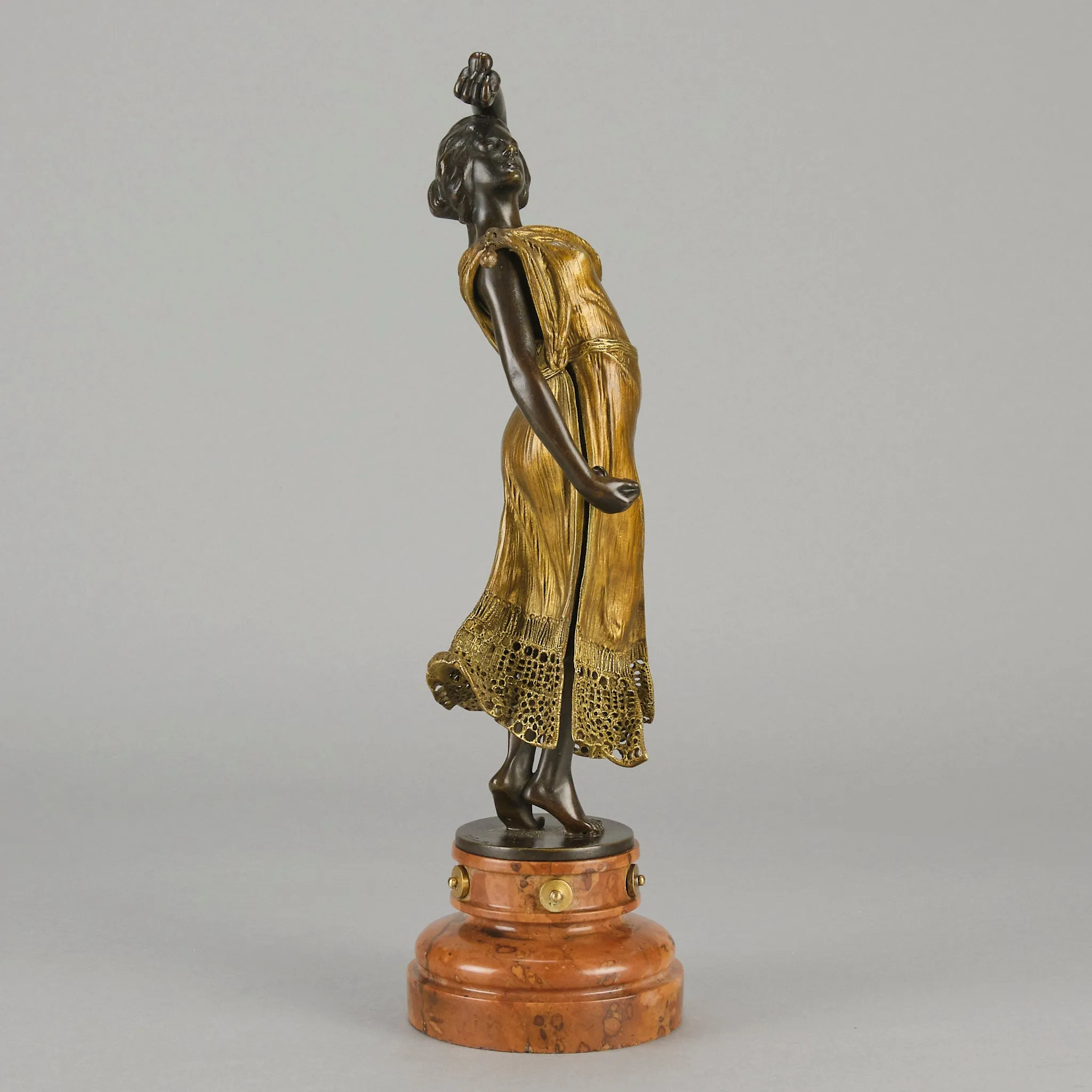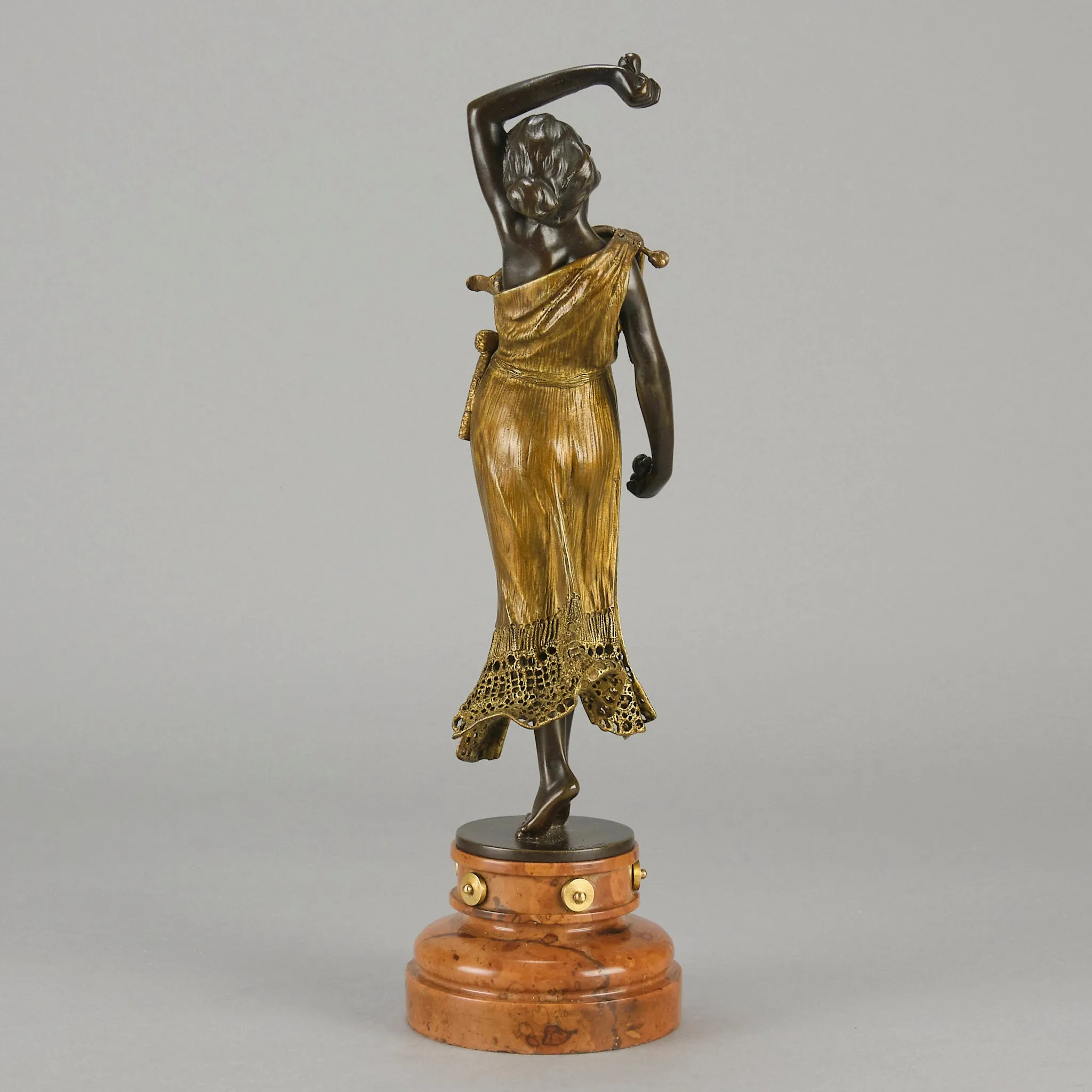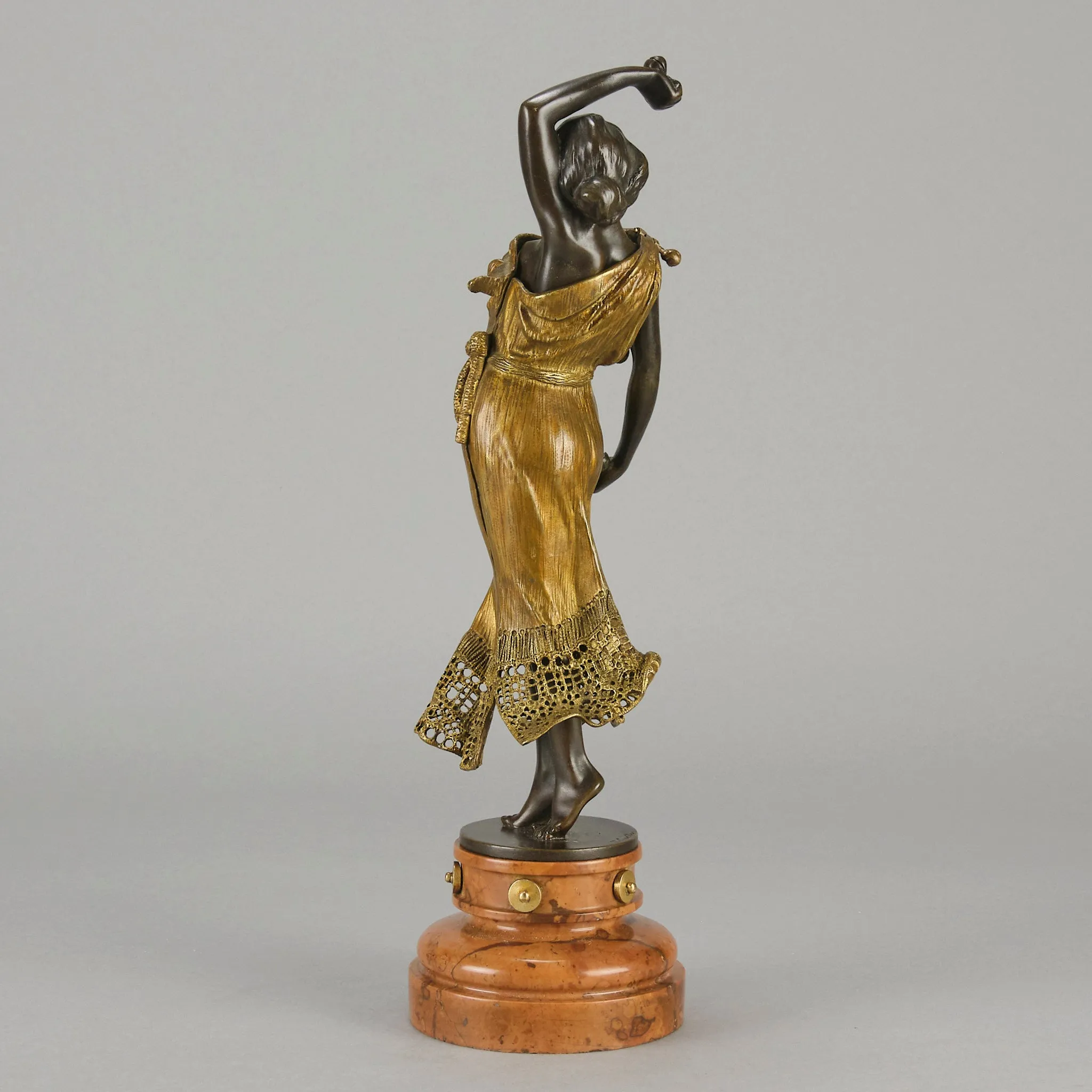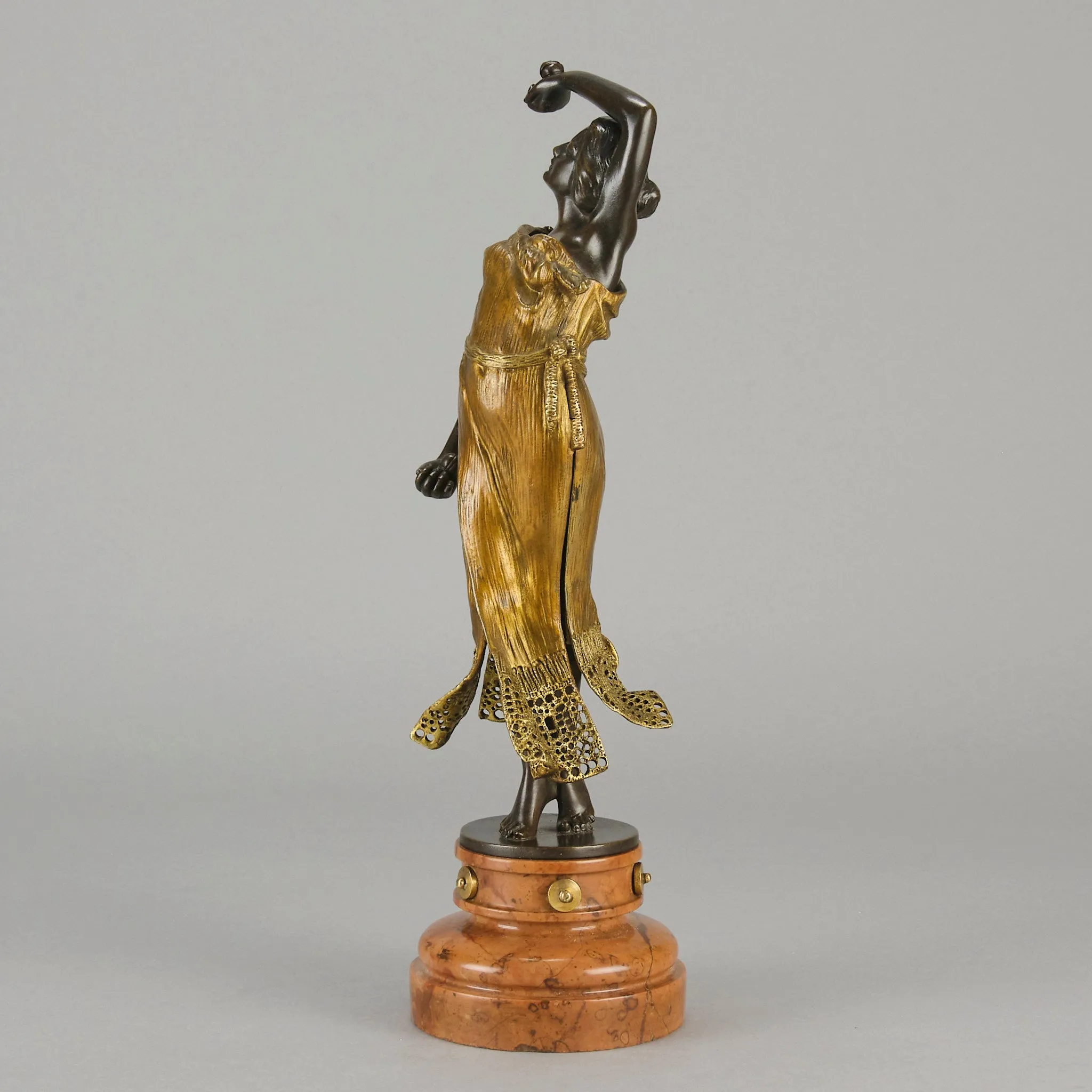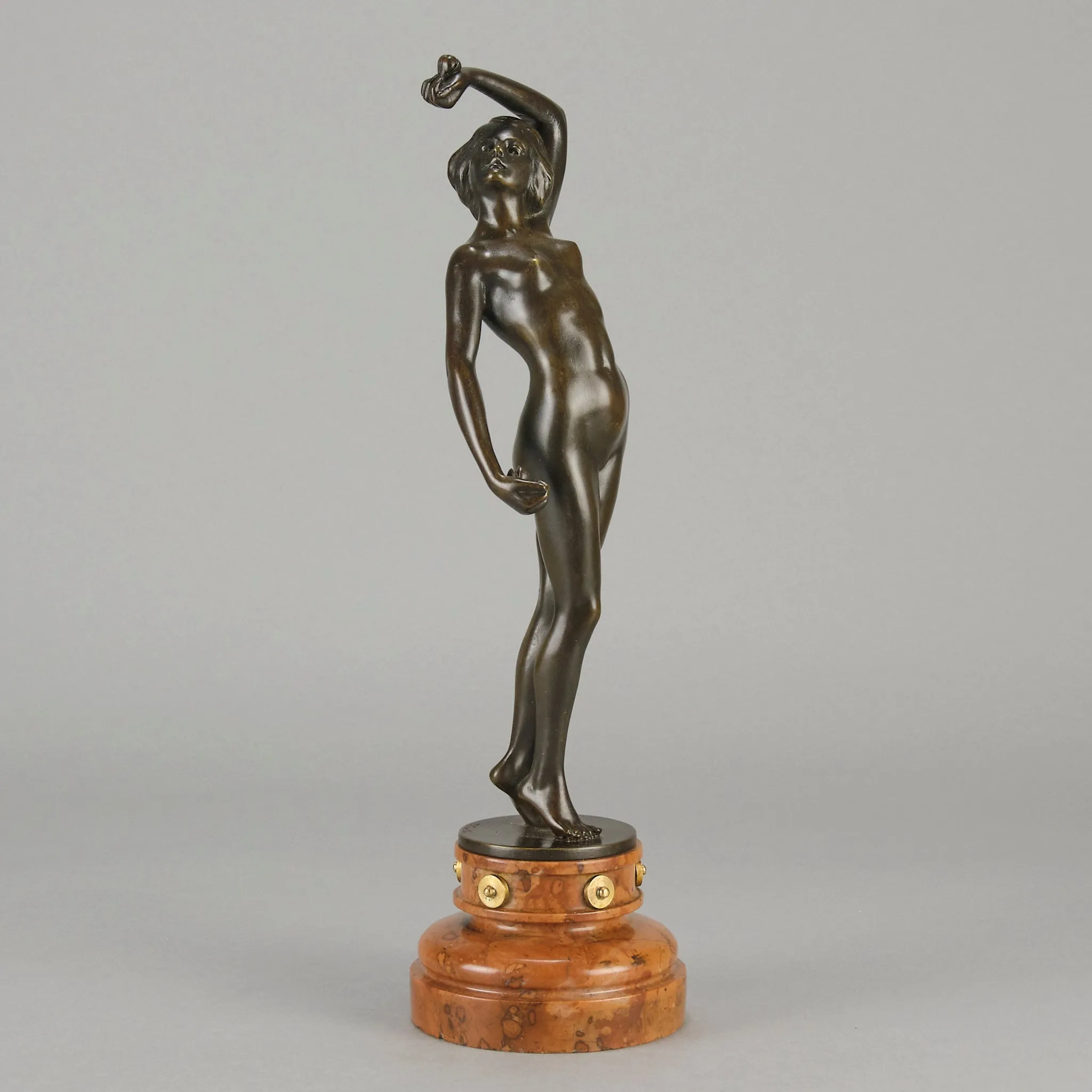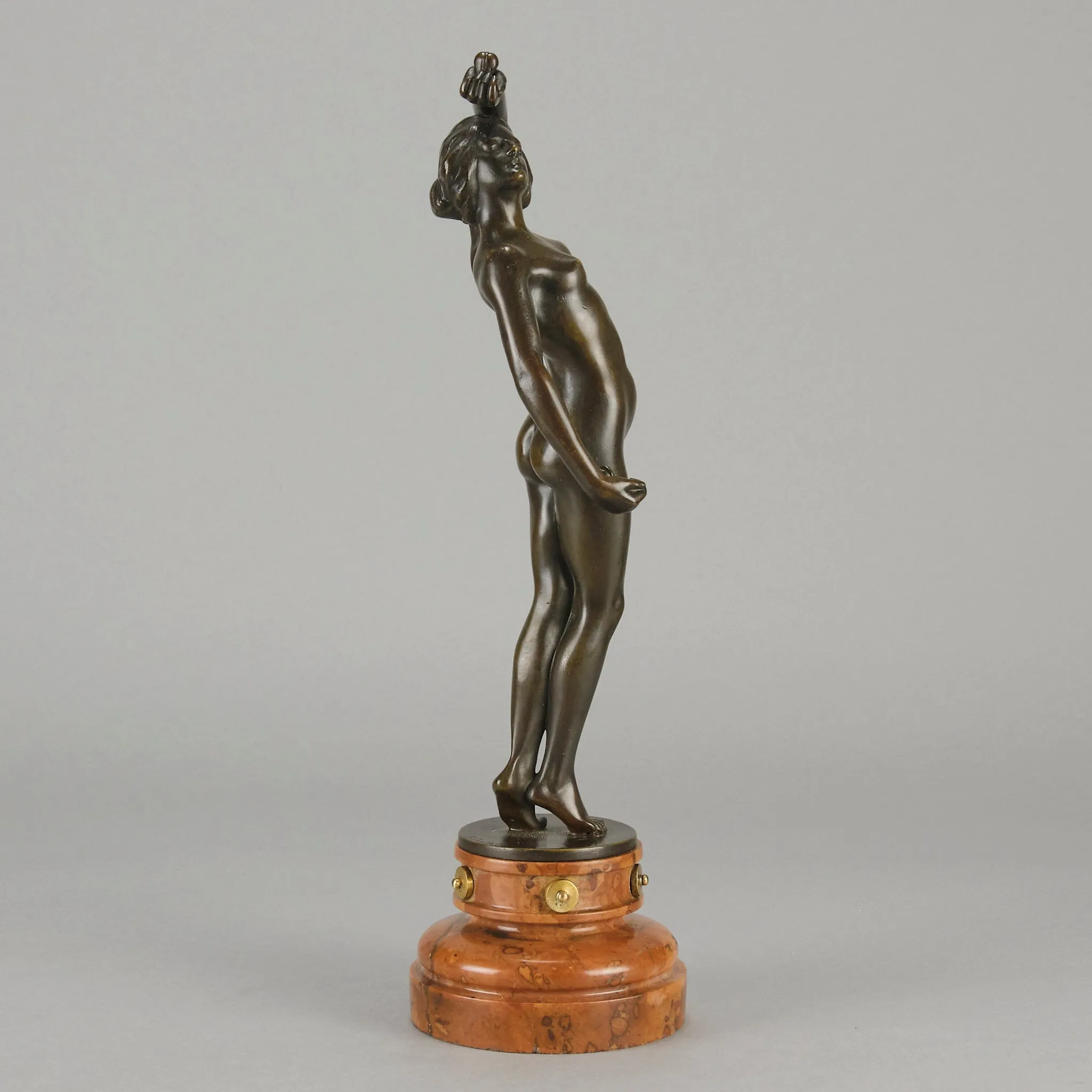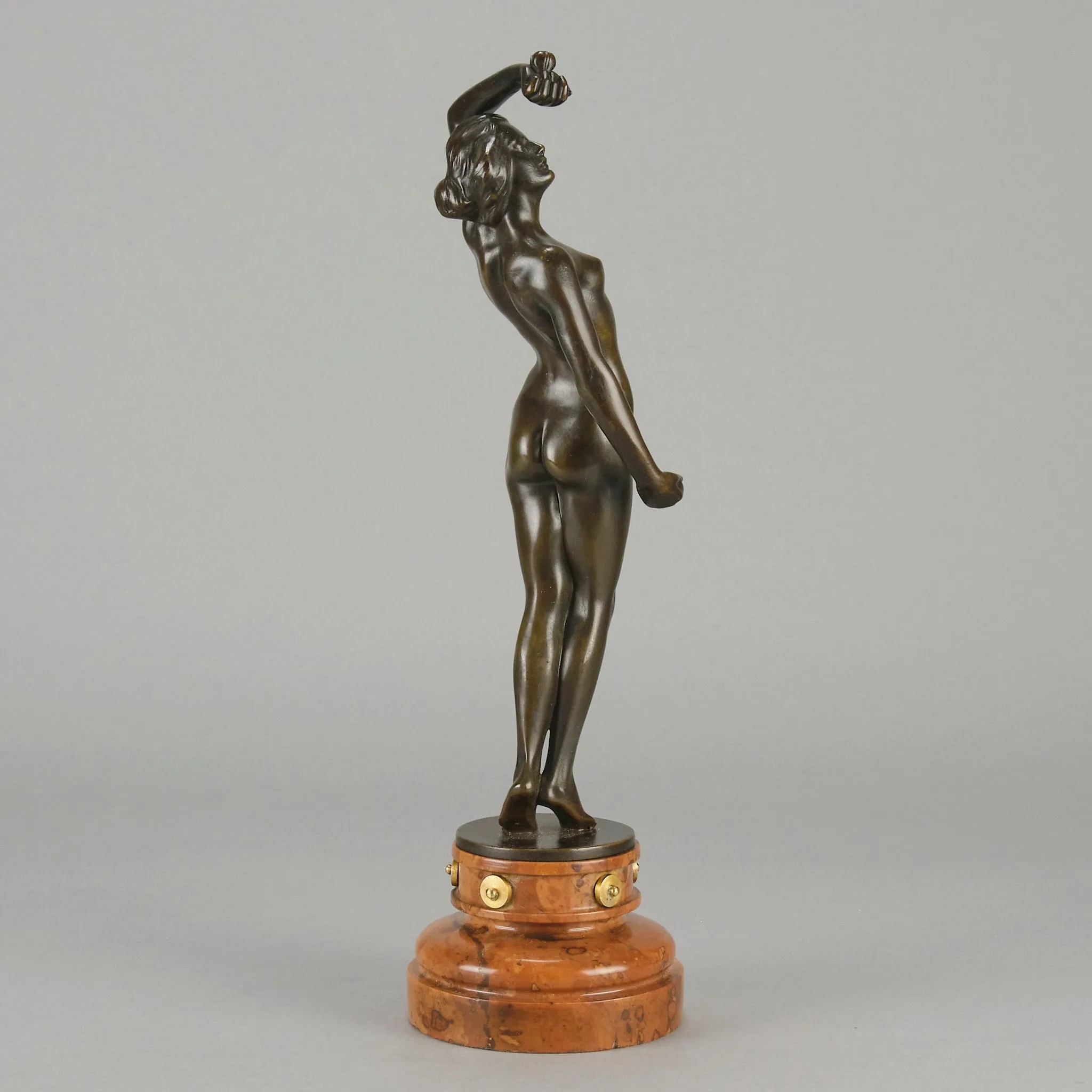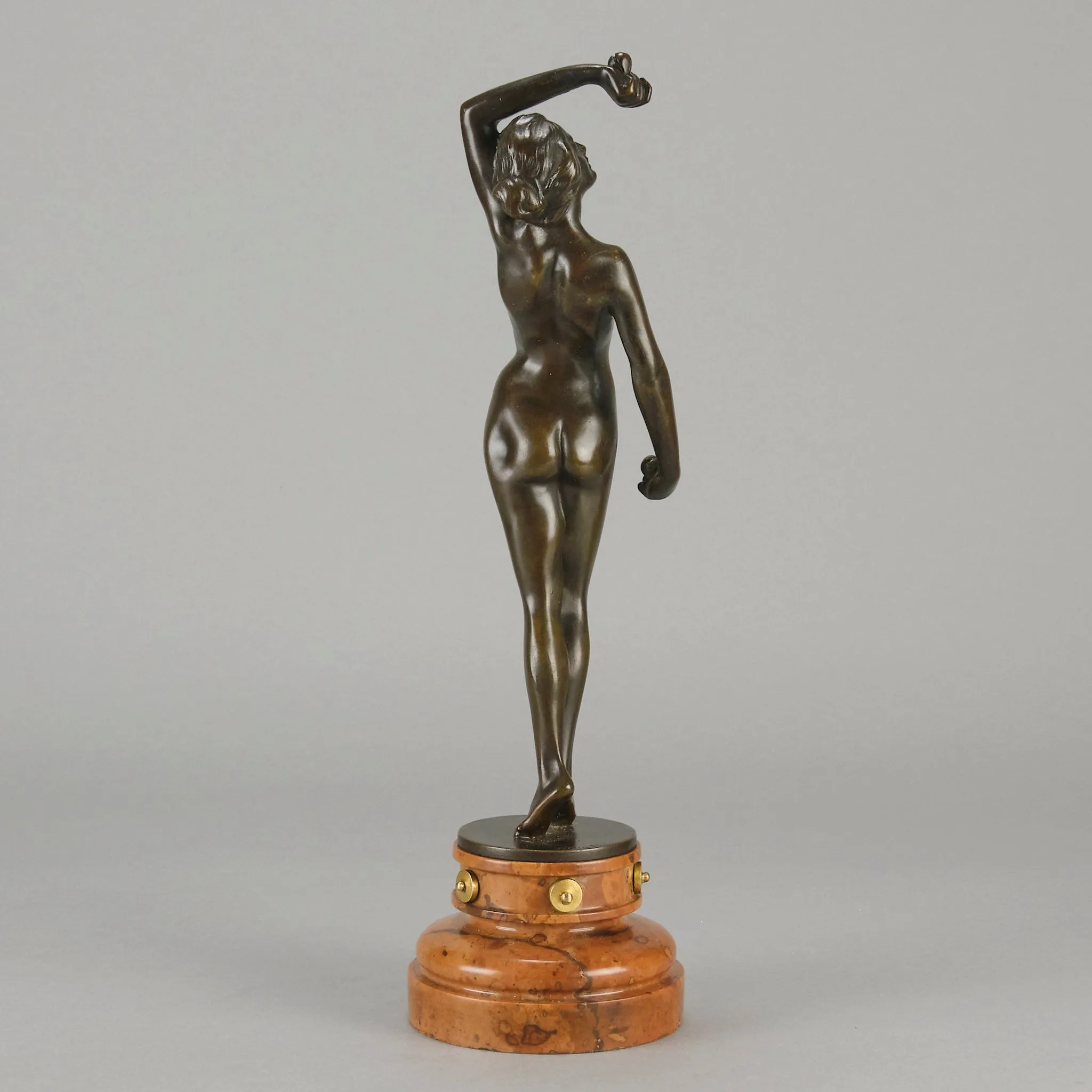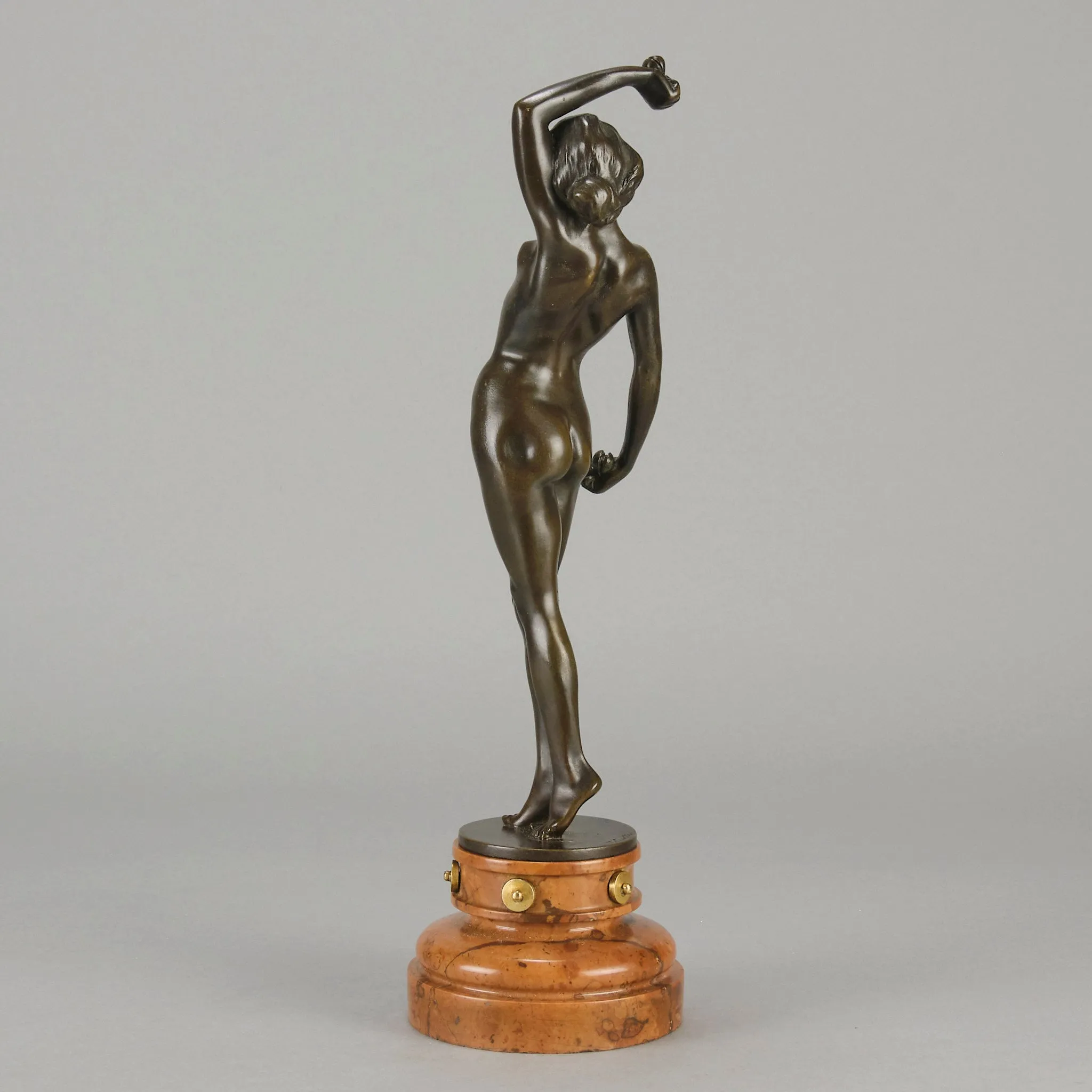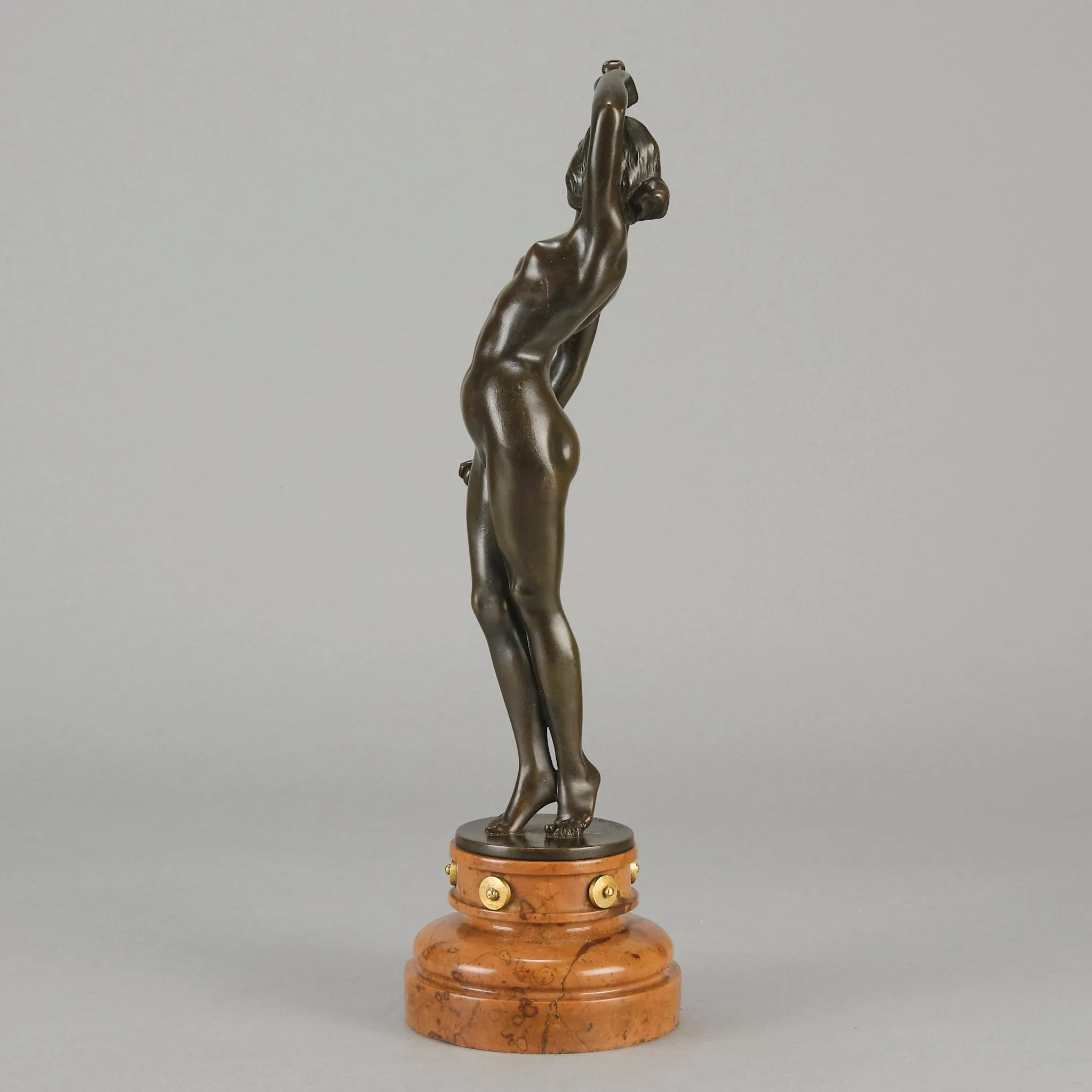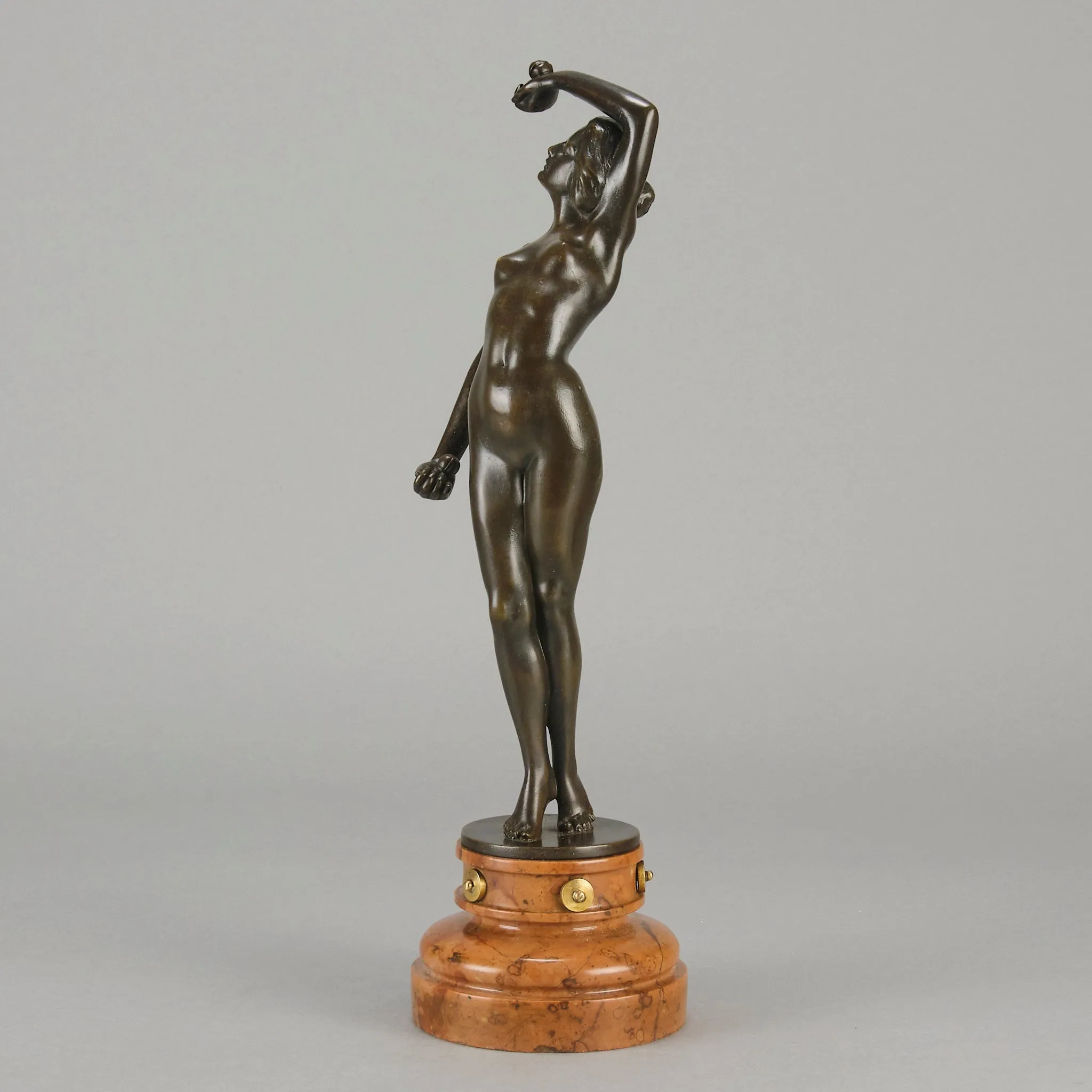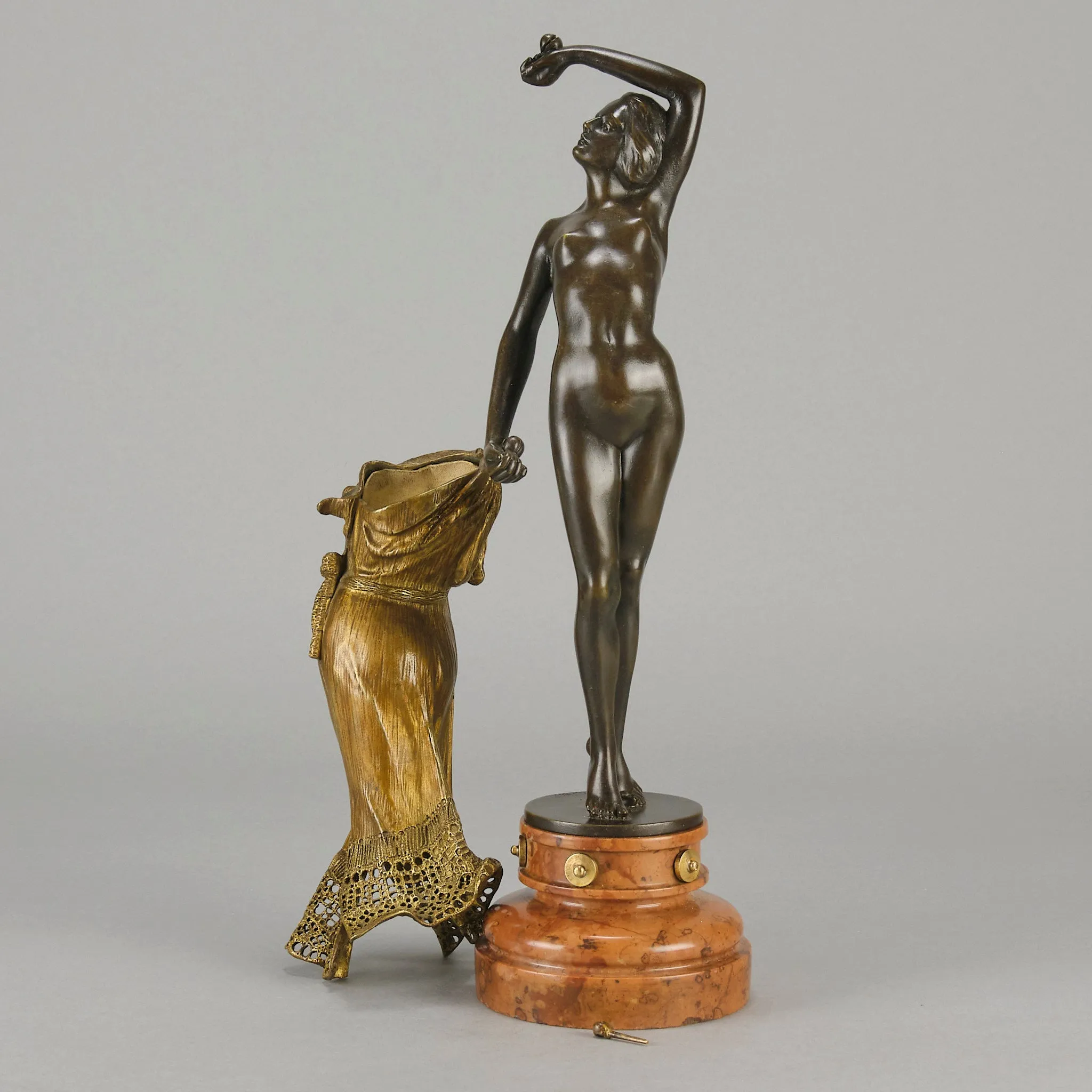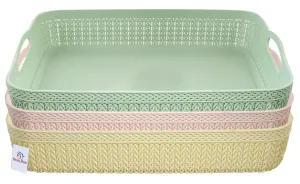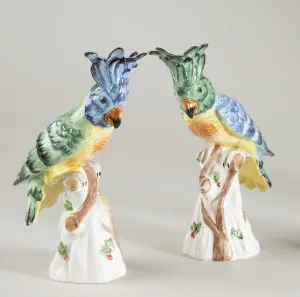A charming bronze figure of a flamboyant flamenco dancer holding a striking pose, her diaphonous gilded dress seductively draped over her, pinned and hinged to be removed in order to reveal her beautiful naked body. The surface of the bronze exhibiting excellent detail and finish. Raised on a shaped marble base & signed T Curts
Sorry, this item has been sold. If you would like information about similar items please contact us on 07971850405 or make an enquiry via .
ADDITIONAL INFORMATION
Height: 35 cm
Condition: Excellent condition
Circa: 1910
Materials: Gilt Bronze
SKU: 8916
ABOUT
Art Nouveau Bronze
was a movement that swept through the decorative arts and architecture in the late 19th and early 20th centuries. Generating enthusiasts throughout Europe and beyond, the movement issued in a wide variety of styles, and, consequently, it is known by various names, such as the Glasgow Style, or, in the German-speaking world, Jugendstil. Art Nouveau was aimed at modernizing design, seeking to escape the eclectic historical styles that had previously been popular. Artists drew inspiration from both organic and geometric forms, evolving elegant designs that united flowing, natural forms with more angular contours. The movement was committed to abolishing the traditional hierarchy of the arts, which viewed so-called liberal arts, such as painting and sculpture, as superior to craft-based decorative arts, and ultimately it had far more influence on the latter. The style went out of fashion after it gave way to in the 1920s, but it experienced a popular revival in the 1960s, and it is now seen as an important predecessor of .
The desire to abandon the historical styles of the 19th century was an important impetus behind Art Nouveau and one that establishes the movement’s modernism. Industrial production was, at that point, widespread, and yet the decorative arts were increasingly dominated by poorly made objects imitating earlier periods. The practitioners of Art Nouveau sought to revive good workmanship, raise the status of craft, and produce genuinely modern design.




